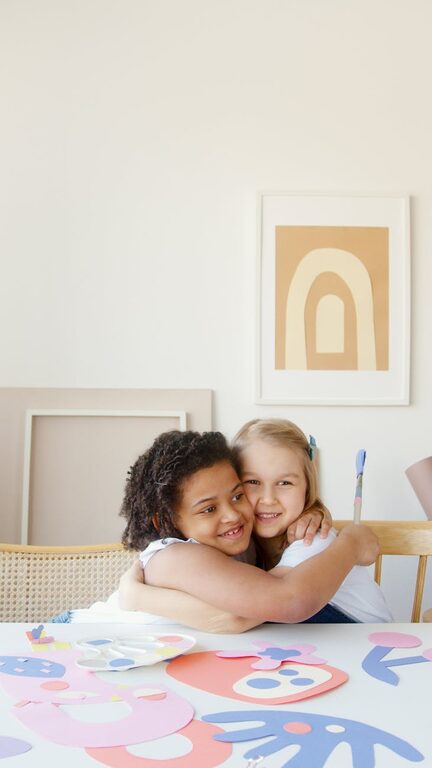Creative Tips for Keeping Kids’ Art Organized and Clutter-Free

Bringing home your child’s masterpieces can be a joyful experience. From colorful drawings to handmade crafts, kids’ art reflects their creativity and growth. However, these precious pieces can quickly pile up, making your space cluttered and overwhelming. Keeping kids’ art organized doesn’t mean you have to toss their creations or store them away in boxes forgotten in the attic. With some thoughtful strategies, you can celebrate and preserve their artwork while keeping your home tidy.
In this blog post, we’ll explore practical and creative tips for organizing your child’s art, making it easy to display, store, and enjoy.
Why Organize Kids’ Artwork?
Before diving into tips, it’s helpful to understand why organizing kids’ art matters:
– Preserves memories: Artwork tells a story of your child’s development and interests.
– Reduces clutter: Avoids stacks of paper and random art supplies taking over your space.
– Encourages creativity: An organized display or storage system motivates kids to create more.
– Simplifies decision-making: Helps you decide what to keep, display, donate, or discard.
1. Create a Dedicated Art Space
Having one spot for all things art-related helps contain the mess and keeps everything accessible.
Tips for Setting Up the Art Space
– Use a small table, shelf, or cart to hold supplies.
– Include containers or baskets for crayons, markers, scissors, and glue.
– Place a corkboard, magnetic board, or string with clips nearby for displaying recent projects.
This space becomes your child’s creative corner where art is made, shown off, and stored easily.
2. Implement a Rotating Display System
Showcasing current artwork celebrates your child’s efforts and keeps the home lively.
Ideas for Rotating Displays
– Clipboards on the wall: Change the art by simply swapping sheets.
– Frames with removable backs: Update the art every few weeks.
– Art wire with clips: Hang multiple pieces and switch them out quickly.
Rotating displays prevent walls from becoming overcrowded and keep the focus on fresh creations.
3. Use Storage Solutions for Preservation
Not all artwork fits on the walls, so having a proper storage system helps keep pieces safe without cluttering your home.
Storage Ideas
– Portfolios: Large, flat folders are perfect for storing drawings and paintings.
– Plastic bins with labels: Easily stackable and protects art from damage.
– Art books: Photograph or scan artwork and create printed photo books.
– Expandable file folders: Great for organizing by date or art type.
Labeling storage containers by year or child makes it easier to find specific pieces later.
4. Digitize Artwork for Long-Term Keepsakes
Digital copies save physical space and allow creative uses like personalized gifts or photo books.
How to Digitize
– Use a smartphone or scanner to capture clear images.
– Organize files in folders by year or theme.
– Use apps designed for artwork storage to keep everything in one place.
Once digitized, you can create calendars, mugs, or custom puzzles featuring your child’s art.
5. Establish Guidelines for What to Keep
It’s impossible to keep every single drawing or craft, so setting simple rules makes the process easier.
Consider These Questions
– Does this piece show a new skill or milestone?
– Is there sentimental value attached to it?
– Was it a special project, event, or school assignment?
– Would your child like to keep or display it?
You can involve your child in the decision-making to teach them about curating and organizing.
6. Repurpose Art into Functional Items
Upcycling your kids’ art is a fun way to celebrate creativity and reduce storage needs.
Creative Repurposing Ideas
– Turn drawings into wrapping paper for gifts.
– Use paintings to decorate homemade greeting cards.
– Laminate artwork to make placemats.
– Sew fabric art into pillows or quilts (for fabric-based art).
These options keep the art alive and integrated into daily life.
7. Schedule Regular Art Organization Sessions
Make organizing a routine to prevent buildup and keep things manageable.
Tips for Scheduling
– Choose a monthly or quarterly day to review all art.
– Rotate displayed pieces and move others to storage or digitize.
– Decide together what to keep or recycle.
Making it a regular activity prevents stress and keeps the art collection under control.
8. Encourage Creative Displays Beyond the Walls
Think outside the frame for showcasing your child’s art.
Alternative Display Ideas
– Create a photo gallery book that you can flip through.
– Display art on refrigerator doors or magnetic surfaces.
– Use clip hangers or binder clips on shelves or doors.
– Make a rotating art calendar showcasing one piece per day or week.
Creative displays make your child’s work feel special and appreciated.
—
Final Thoughts
Organizing your child’s artwork is about more than tidying up; it’s a way to honor their creativity and chronicle their growth. By creating dedicated spaces, using smart storage solutions, digitizing, and involving your child in the process, you’ll strike a healthy balance between preserving memories and maintaining an orderly home.
Try out these tips and discover what works best for your family. Happy organizing!
—
If you enjoyed these ideas, feel free to share your own tips and experiences in the comments below!
